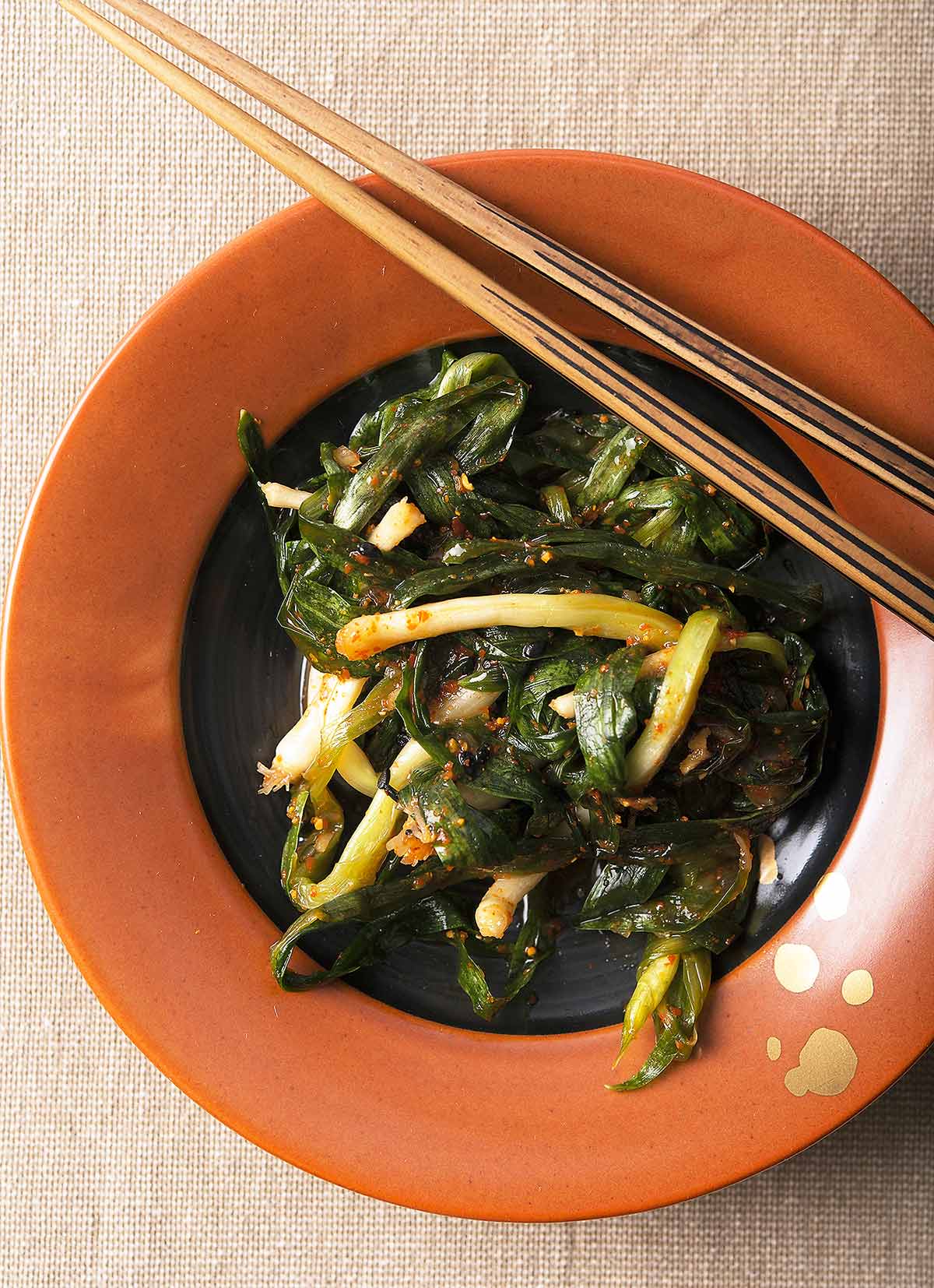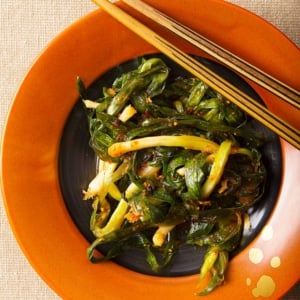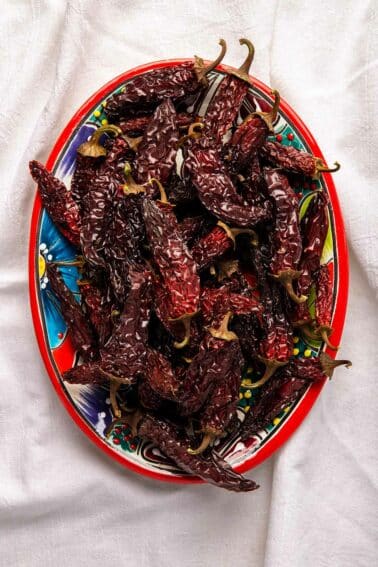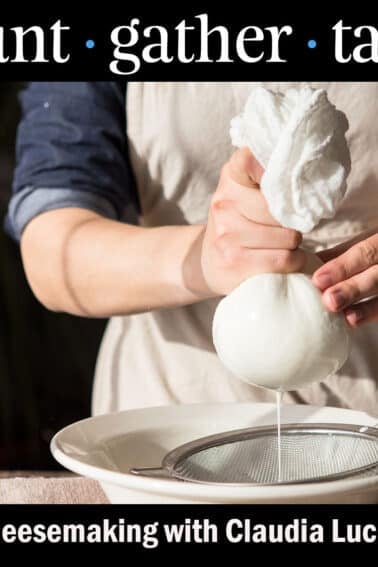As an Amazon Associate I earn from qualifying purchases.
Korean green onion kimchi might be my favorite variety of this powerfully flavored condiment/vegetable.
And for a wild foods guy like myself, making green onion kimchi couldn’t be easier considering how many wild onions grow all over the country.

I’d always been a little nervous about making kimchi, which is to Korea what sauerkraut is to Germany. Kimchi, if you’ve never eaten it, is essentially the national dish of Korea, is eaten with everything and comes in myriad forms.
Every Korean I’ve ever met is a self-described authority on kimchi, much the way Italians are with pasta or the way New Jerseyans and New Yorkers are with pizza and bagels.
So it was with great trepidation that I served my friend Helen Lee some of my homemade green onion kimchi some months ago. When she ate it, her eyes widened. “Wow! This is really good! It actually has the kimchi aftertaste!”
Helen explained that good kimchi is fermented for quite a long time, and it develops a particular aftertaste, as well as a slight fizziness from the ferment. This is what separates “real” kimchi from kimchi-flavored crap, she said.
Buoyed by Helen’s vote of confidence, I made more kimchi. What is it, you ask? Well, it is a vegetable of some sort — usually cabbage, daikon or green onions — fermented with salt, soy or fish sauce, garlic, ginger and LOTS of chiles. It sits around for anything from a few days to a year, melding flavors and generally doing its microbial thing.
When you eat it, kimchi is a nuclear bomb of flavor. Pungent, picante and powerful all at once. A little goes a long way. Unless you are Korean, in which case you can eat tubs of the stuff.
I like green onion kimchi next to bland foods like steamed rice, simply cooked meat and fish — especially bass and catfish — and in kimchi dumplings. It’s really good with bulgogi, that other national dish of Korea, too.
Koreans use scallions or other green onions, which you can of course use, but I prefer to use wild onions like ramps, the Sierra wild onions we get at high elevations, or three-cornered leeks, which are an invasive species around these parts.
Everyone reading this has some sort of wild onion living near you, so give this recipe a go this spring. It will be ready right when you break out the grill.
Wild Green Onion Kimchi
Ingredients
- 1 1/2 pounds green onions
- 1 cup kosher salt
- 6 cups water, divided
- 2 tablespoons rice flour
- 1/2 cup fish sauce
- 1/4 to 1/2 cup cayenne or Korean chile powder
- 2 tablespoons sugar
- 1 tablespoon sesame seeds
- 3 tablespoons minced garlic
- 2 tablespoons minced ginger
Instructions
- Make sure all the green onions are clean. If the tops have not been trimmed, cut off about 1 to 2 inches of the top green part, which is very stringy. Dissolve the kosher salt into 5 cups of water. Soak the green onions in the water for 1 hour.
- Meanwhile, bring the other cup of water to a boil and whisk in the rice flour. Turn off the heat and keep stirring until the flour is totally incorporated into the water. Let this cool while the onions soak.
- When the rice flour mixture is cool, mix in the remaining ingredients and put everything in a very large bowl or a rimmed baking sheet.
- Take each onion and, if you want, wrap the green end around the white part to make each onion more compact; most Korean recipes do this. Alternatively, you can chop them coarsely.
- Put on some latex or rubber gloves if you have them, because you're gonna get messy. Mix the onions with the spice mixture so they are completely coated, then cram them into quart Mason jars. Leave about 3 to 4 inches headspace. You can take your gloves off now. Find a smaller jar or some sort of clean weight -- I used narrow jelly jars -- and fill it with water. Use this smaller jar to weigh down the kimchi in the Mason jar so it is totally submerged. Let these jars sit in a cool, dark place (cool room temperature is perfect) for at least 3 days, and up to 2 weeks.
- To store, remove the smaller jars and redistribute the kimchi into wide-mouth pint jars. Cap and refrigerate for up to 6 months.
Notes
Nutrition
Nutrition information is automatically calculated, so should only be used as an approximation.






Do you have to include sugar in the mix? Or can I leave it out? Thanks!
I have never seen a non-Korean recipe before that included the rice paste. My (Korean) mother would approve.
Just made this with wild ramps in Michigan. Really turned out great, awesome kimchi flavor. Two days of room temp fermenting toned down the ramps perfectly, not too overpowering but definately a punch in the tastebuds. Great with rice or ramen, or just by itself. My new favorite use for ramps. Thanks for the idea!
I’ll be giving this recipe a try with some ramps I foraged yesterday.
Just made a batch from Jack of the hedge, aka wild garlic
SBW
Oh Hank, you do my Halmoni (Korean for grandmother) proud. Based on the ingredient list and instructions, I would swear you’re part Korean 😉
Sounds good, I think I’ll try it.
I just cracked open my cranberry, apple, clove and cinnamon sauerkraut, which is really good.
Sounds good. I made some kimchi last summer from perilla leaves (invasive here in VA) that turned out pretty well.
A nuclear bomb of flavor, you don’t say? I’m the only one with no wild onions nearby. That’s probably not true. I think if I travel 45 minutes down I might know where to find some. This sounds awesome, thx.
This looks really good! I haven’t liked Kimchi at Korean restaurants but this sounds like a great addition to rice or fish. I will definitely try it.
Definitely going to make this with the Ramsons I mentioned to you via FB a few weeks ago. Thanks!
Forget nuclear bombs of flavor, this is deduction by wild onions.
You know, I’m with Lou. I think you should teach a class on foraging spring greens.
Steve: You take them out of the water.
Nossi: 1) No. Soy sauce is saltier than fish sauce, actually. 2) The rice flour paste helps meld everything together, and provides some nutrients for the wee beasties that make the ferment happen.
Erika: Yep, you wind the limp green leafy end around the stalk. It’s not an exact science, though…
I am SO doing this when the ramps come up. A question though – when you say “wrap the green end around the white part,” do you mean to just fold it over or are you actually trying to wind the green around the bulb end like it was a ribbon? I’m trying to picture how this would work with a ramp given their rather wide leaves. Thanks, Hank!
Wild greens, obviously 😮
Great post. 2 questions:
1) if i use soy sauce, should I up the amount of salt?
2) What’s the point of the rice flour?
Thanks
Please teach a field trip on greens!
I’m making this soon!
Looks like a fantastic recipe. I have one question though. The onions are soaked for 1 hour in the 5 cups of salted water. When the onions are added to the rest of the ingredients in step 3 are they removed from the water or is the water added also?
Thanks for your work on the blog and I’m looking forward to your next cookbook and seeing/meeting you in Colorado this fall.